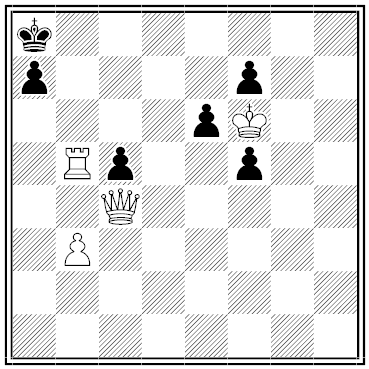Author: Greg Ross
Fish Story
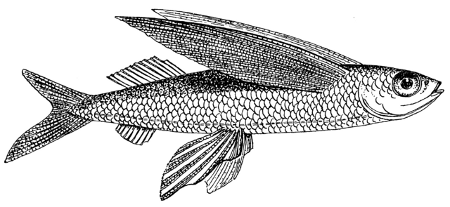
David Hume argued that reports of miracles can never be credited, because the weight of human experience must always favor a more natural explanation. “Nothing is esteemed a miracle, if it ever happen in the common course of nature. It is no miracle that a man, seemingly in good health, should die on a sudden: because such a kind of death, though more unusual than any other, has yet been frequently observed to happen. But it is a miracle, that a dead man should come to life; because that has never been observed in any age or country. There must, therefore, be a uniform experience against every miraculous event, otherwise the event would not merit that appellation.”
The sun is said to have danced in the sky in 1917. Well, which is more likely, that such an extraordinary event actually occurred, or that it was really a mass hallucination, an optical illusion, or any of a hundred more familiar explanations? A miracle, a suspension of natural law, is always the least likely possibility, so as rational creatures we must always reject it.
But Alfred Russel Wallace objected, “Such a simple fact as the existence of flying fish could never be proved, if Hume’s argument is a good one; for the first man who saw and described one, would have the universal experience against him that fish do not fly, or make any approach to flying, and his evidence being rejected, the same argument would apply to the second, and to every subsequent witness.”
Hume’s argument, he said, was “radically fallacious,” because if it were sound “no perfectly new fact could ever be proved, since the first and each succeeding witness would be assumed to have universal experience against him.” Who’s right?
Rock Music
From the 2001 Moscow Mathematical Olympiad:
Before you are three piles of stones. One contains 51 stones, one 49 stones, and one 5 stones. On each move you can either combine two piles into one or divide any pile with an even number of stones into two equal piles. Is it possible to end up with 105 piles, each containing a single stone?
In a Word
undoctor
v. to make unlike a doctor, to degrade a doctor
Busy
On May 29, 1933, Harper’s Bazaar editor Art Samuels was awaiting a piece by the notoriously unreliable Robert Benchley when he received six successive telegrams:
AM TAKING CARE OF MY SICK MOTHER.
AM ACTING AS GUIDE FOR HUNTING PARTY.
AM INSPECTING NEW PACKARD ENGINES.
AM JUDGING ORANGE BLOSSOM CARNIVAL.
AM BEING INDUCTED INTO INDIAN TRIBE.
AM WORKING ON PICTURE WITH GRETA GARBO.
All bore the current date, but their origins were listed as Worcester, Massachusetts; Presque Isle, Maine; Detroit, Michigan; Miami Beach, Florida; Santa Fe, New Mexico; and Hollywood, California. Samuels wrote back GATHER YOU HAVEN’T DONE THE PIECE.
Benchley avoided another engagement by having his mother send this wire from Massachusetts:
SORRY I CAN’T ATTEND LUNCHEON TODAY BECAUSE I AM IN BOSTON. DON’T KNOW WHY I AM IN BOSTON BUT IT MUST BE IMPORTANT BECAUSE HERE I AM.
BENCHLEY
Finnegans Brake
In 1932 C.K. Ogden translated the last four pages of Anna Livia Plurabelle into Basic English, “the International Language of 850 words in which everything may be said.”
Here’s Joyce’s text:
Well, you know or don’t you kennet or haven’t I told you every telling has a tailing and that’s the he and the she of it. Look, look, the dusk is growing. My branches lofty are taking root. And my cold cher’s gone ashley. Fieluhr? Filou! What age is at? It saon is late. ‘Tis endless now senne eye or erewone last saw Waterhouse’s clogh. They took it asunder, I hurd thum sigh. When will they reassemble it? O, my back, my back, my bach! I’d want to go to Aches-les-Pains. Pingpong! There’s the Belle for Sexaloitez! And Concepta de Send-us-pray! Pang! Wring out the clothes! Wring in the dew! Godavari, vert the showers! And grant thaya grace!
And here’s Ogden’s translation:
Well are you conscious, or haven’t you knowledge, or haven’t I said it, that every story has an ending and that’s the he and she of it. Look, look, the dark is coming. My branches high are taking root, And my cold seat’s gone grey. ‘Viel Uhr? Filou! What time is it? It’s getting late. How far the day when I or anyone last saw Waterhouse’s clock! They took it to pieces, so they said. When will they put it together again? O, my back, my back, my back! I would go then to Aix-les-Pains. Ping pong! That the bell for Sachseläute — And Concepta de Spiritu — Pang! Take the water of your cloths! Out with the old, in with the new! Godavari keep off the rains! And give us support!
“The simplest and most complex languages of man are placed side by side,” Ogden wrote. “The reader will see that it has generally been possible to keep almost the same rhythms.” Judge for yourself.
Scarecrow
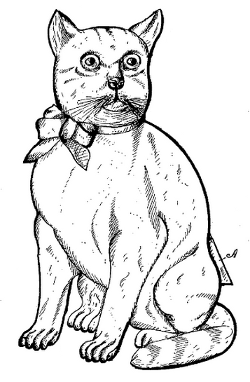
Patented in 1884, John Nelson’s “device for frightening rats and mice” is the lowest of low tech:
The said invention consists in printing the figure of a cat on cardboard having several coats of illuminating paint arranged so that the figure will shine in the dark; and, furthermore, in perfuming said figure with peppermint, which is obnoxious to rats and mice, and thus the device will have the effect to drive away these rodents.
For all I know it worked. If not, users could escalate to this solution, patented two years earlier.
Legal Vision
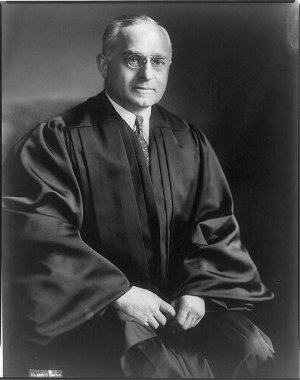
In May 1954, 12-year-old M. Paul Claussen Jr. of Alexandria, Va., sent a letter to Felix Frankfurter saying that he was interested in “going into the law as a career” and requested the jurist’s advice as to “some ways to start preparing myself while still in junior high school.” He received this reply:
My Dear Paul:
No one can be a truly competent lawyer unless he is a cultivated man. If I were you, I would forget all about any technical preparation for the law. The best way to prepare for the law is to come to the study of the law as a well-read person. Thus alone can one acquire the capacity to use the English language on paper and in speech and with the habits of clear thinking which only a truly liberal education can give. No less important for a lawyer is the cultivation of the imaginative faculties by reading poetry, seeing great paintings, in the original or in easily available reproductions, and listening to great music. Stock your mind with the deposit of much good reading, and widen and deepen your feelings by experiencing vicariously as much as possible the wonderful mysteries of the universe, and forget about your future career.
With good wishes,
Sincerely yours,
Felix Frankfurter
Moving Language
Writing in Word Ways in May 1975, David Silverman noted that the phrase LEFT TURN FROM THIS LANE ONLY, stenciled in the leftmost traffic lane at various U.S. intersections, was ambiguous — and that both meanings had been struck down, in contested court cases in Arizona and California.
In one case, the motorist had driven straight ahead rather than turning, which the prosecutor said was illegal. The motorist returned that this wasn’t so — LEFT TURN FROM THIS LANE ONLY meant that it would be illegal to make a left turn from any other lane, but it didn’t require that a left turn be made from this one. “If the city had meant my failure to turn to be illegal, they should have written FROM THIS LANE, ONLY A LEFT TURN.”
In the other case, the motorist had made a left turn from the lane to the right of one marked LEFT TURN FROM THIS LANE ONLY. He argued that this was legal — the marking required drivers in the leftmost lane to turn left, but imposed no requirement on the other lanes. “Had the city wanted to make my turn illegal the marking should have been LEFT TURN ONLY FROM THIS LANE.”
Both motorists were found not guilty. Perhaps because of such confusion, Silverman noted, most intersections had lately begun to use unambiguous arrows: “One good picture is worth ten thousand signs reading LEFT TURN IF AND ONLY IF FROM THIS LANE.”
Dream Sentences
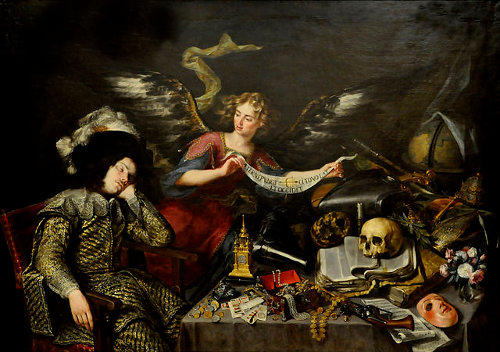
After taking opium at Malta, Coleridge dreamed of the sentence “Varrius thus prophesied vinegar at his door by damned frigid tremblings.”
Delirious with fever in Scotland, Maria Edgeworth was haunted by the words “A soldier of the forty-second has lost his portmanteau.”
In a vision at Lerici, Shelley met his own figure, which asked, “How long do you mean to be content?”
Poet William Mickle regretted that he could not remember the poetry he composed in his dreams, which he said was “infinitely superior to anything he produced in his waking hours.” But his wife recited two lines he had spoken in his sleep:
By Heaven, I’ll wreak my woes
Upon the cowslip and the pale primrose.
Robert Browning dreamed that he attended a performance of Richard III and heard a line “immensely finer than anything else in the play. … When I woke I still had hold of the stupendous line, and it was this:
‘And when I wake my dreams are madness — Damn me!'”

